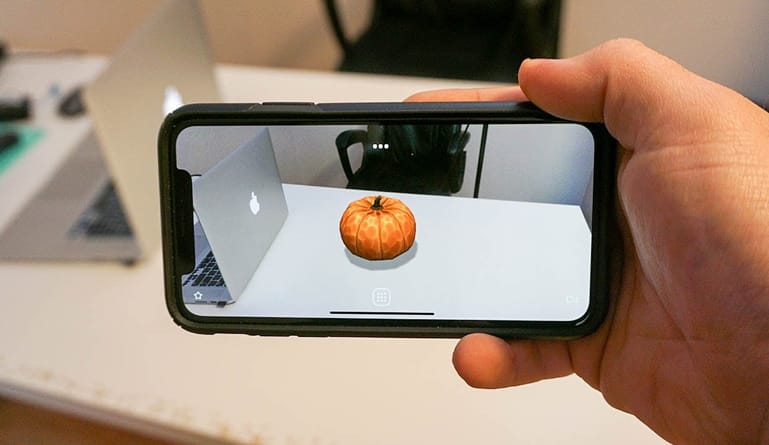Should AR be a part of your overall marketing strategy?
How to create an augmented reality marketing strategy for your business.
Augmented reality, or AR, is one of the latest and greatest marketing techniques to help draw people to your brand. AR helps to give your customers or potential clients a way to see more clearly how your products can solve their problems or simply gives companies a way to interact in a more fun, creative way with their audience.
Augmented Reality Marketing Examples
There have been several recent examples of augmented reality marketing campaigns. Here are some ways that other brands create augmented marketing that helps them grow their sales and brand awareness.
Snapchat: Snapchat is one of the leaders in AR. Many companies have added Snapchat to their marketing strategy, mostly in the form of partnering with the platform, paying to have permanent or temporary branded Snapchat filters added so that people can use them on the app at certain events, on certain dates, in certain areas, or whatever other specifications the brand designates.
IKEA: IKEA, and furniture companies like it, have started using AR to showcase how furniture might look in a customer’s space. Using their own phone or mobile device, customers can take a picture of their space and then add products from the IKEA catalog to the picture, as a digital try before you buy strategy.
Timberland: This brand used a virtual fitting room so that customers could see how their clothing would look before they bought it. The brand reported positive results and high conversion rates with this AR technology.
How to Execute Augmented Reality in Your Organization
How can you take the creativity and interactivity of AR and apply it to your brand? Here are some ideas.
Hire outside help: You might want to find the resources for your augmented reality marketing strategy with AR experts. Hiring an agency or augmented reality marketing company can help you develop your strategy and create a compelling AR marketing piece that will resonate with your audience.
Staff up: It might also make sense to hire an internal team dedicated to AR that would work in conjunction with your marketing team. If your company already has a development team that works on apps, it might make sense to add small AR projects to their workload. If not, if might make sense to hire AR specialists and app developers who can help you create AR resources in house. Businesses like the Gap and Pottery Barn have integrated AR into their sales and marketing strategies to the point where they have specialized resources and applications for those AR products. If your brand is planning something similarly large scale, it might be beneficial to have an agile in-house team for these projects.
Plan long term: Like all marketing campaigns, AR campaigns aren’t just a simple setup and launch. They require a lot of patience and planning, and a lot of trial and error if your business is just starting to create AR resources. Knowing how AR fits into your long-term business goals and how it works alongside other marketing campaigns assets is crucial in creating a successful AR campaign. So, make sure that you practice patience, communicate well with your team, and don’t expect immediate results. This can be discouraging after putting so much time and money into AR resources, but remember that augmented reality can grow into a long-term strategy and tool for your business can help businesses have perspective on their creative work.
Has your business done any AR marketing? How did you integrate it into your overall marketing strategy? Have you found any augmented reality marketing ideas that inspired your business?





